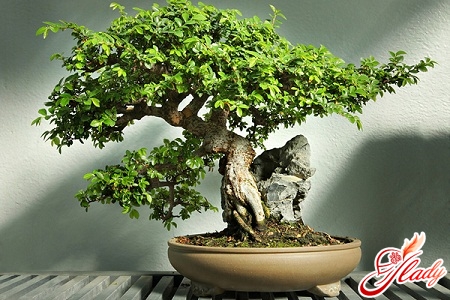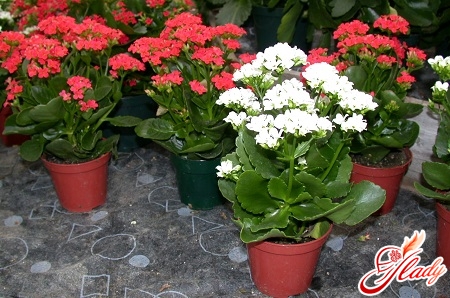 An alien from Japan, bonsai is already in Russia todayis not uncommon. Many houses have flowerpots with miniature trees. They are placed on windowsills, put on coffee tables, and used to decorate winter gardens. However, not everyone knows how to properly care for this miniature tree. Here we will tell you how to grow bonsai and care for it at home. Growing bonsai is not within everyone's power. This is an activity for neat, thoughtful and patient people. Strict canons, developed over centuries, clearly prescribe what the crowns and trunks should be like, what containers the trees should be planted in depending on their size. Moreover, bonsai cannot be formed once and for all. The tree is alive, it continues to grow and changes every day, which means it requires regular care, constant replanting and pruning. Of course, deviations from the rules are permissible. This is what allows you to create masterpieces. But only a master who has mastered the techniques of growing miniatures can afford such experiments.
An alien from Japan, bonsai is already in Russia todayis not uncommon. Many houses have flowerpots with miniature trees. They are placed on windowsills, put on coffee tables, and used to decorate winter gardens. However, not everyone knows how to properly care for this miniature tree. Here we will tell you how to grow bonsai and care for it at home. Growing bonsai is not within everyone's power. This is an activity for neat, thoughtful and patient people. Strict canons, developed over centuries, clearly prescribe what the crowns and trunks should be like, what containers the trees should be planted in depending on their size. Moreover, bonsai cannot be formed once and for all. The tree is alive, it continues to grow and changes every day, which means it requires regular care, constant replanting and pruning. Of course, deviations from the rules are permissible. This is what allows you to create masterpieces. But only a master who has mastered the techniques of growing miniatures can afford such experiments.
Forming the silhouette
Many styles of bonsai have been developed, but in all of themimpose general requirements on the crown. It should be conical in shape or divided into horizontal compact tiers. The needles and foliage in each tier should be as dense as possible. Such rules are due to the growth patterns of trees. If they are followed, all branches - both lower and upper - receive the necessary amount of light, the crown itself is ventilated, and each tier has its own microclimate. And this contributes to the vitality of the growing bonsai. Formation of the crown is a painstaking and lengthy process. After transplanting trees taken from the natural environment into a container, the first haircut is immediately carried out. To do this, leave the branches that fit the image of the future bonsai, and cut off all the excess. Over the next few years, again select only the most suitable ones from the new shoots and cut off everything else. By trimming the tree in this way, you can even create a bonsai in the style of "semi-cascade" or "cascade" from an upright tree. You can set a certain direction for the growth of the branches. To do this, they are pulled with weights, wire is applied, or branches are tied to the roots. A tree formed in this way still requires regular pruning. They are needed not only to maintain the beauty of the silhouette, but also to "redistribute" energy between weak and strong branches. The strongest branches of a tree are usually the upper ones. And the lower ones are usually weaker. The branches located outside the crown are much stronger than the inner ones. The first time a bonsai tree is pruned in the season is in early spring, after wintering. Subsequent prunings only shorten the branches that have gone beyond the silhouette. The frequency of these prunings depends on the growth rate of the needles or foliage. The technology and mode of pruning for each species is individual. If you are interested in how to grow a bonsai from a pine tree, then you need to know the following. Pine is pruned in several stages in the spring. The weakest branches are pruned for the first time, then branches of medium strength, and a week later they work with the top. One or two "candles" are left on each shoot. Moreover, those that are located in the horizontal plane, the rest - the lower and upper ones - are cut off. All the old needles are torn off, and some of the new ones are cut off. Some of the new needles are still left so that the branches do not die off. On strong branches, you can save five to six pairs of needles, on weak ones - eight to ten, and on the top up to five pairs. This procedure helps to redistribute energy between the branches and reduce the size of the needles, which gradually become more proportional to the branches and trunk of the miniature tree. You should know that pine is one of the most difficult species to care for. Its loose, transparent crown, the lower branches of which quickly die off, must always be stimulated to form new growth points inside the crown. The ability to grow bonsai from coniferous trees in the East indicates a very high level of the master. If you are a beginner, but you are interested in how to grow bonsai at home, then you should start with the Chinese juniper, which is easier to care for. It is good to learn on unpretentious deciduous plants - elm or ficus.
Root system
Bonsai made of coniferous trees, which is alreadyformed, replanted every three to five years, deciduous - every three years. Unformed bonsai are replanted: coniferous once every two to three years and deciduous once every one to two years. Replanting is done before the start of active growth, in early spring. It is important to change the container to a new one, which should be slightly deeper than the previous one and a couple of centimeters larger in diameter. When replanting, you need to cut off excessively overgrown, old and damaged roots, then shake off the soil along the edges of the earthen lump and renew the soil. The earthen lump should be allowed to dry out before planting. After replanting, bonsai need to be watered abundantly. To properly care for bonsai, you should learn as much as possible about the characteristics of the tree being grown: how quickly it grows, how much light and water it needs, what air humidity and temperature it needs. At the same time, it should be remembered that there are so many intricacies of bonsai formation and care that they can only be comprehended through practice. We recommend reading:









